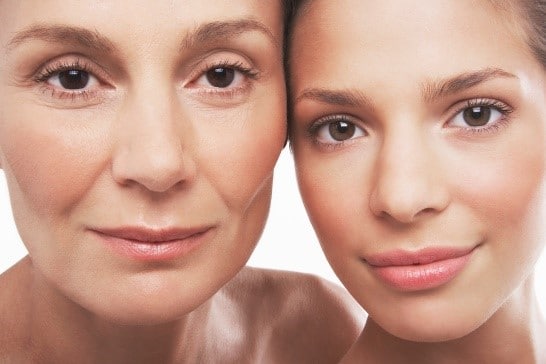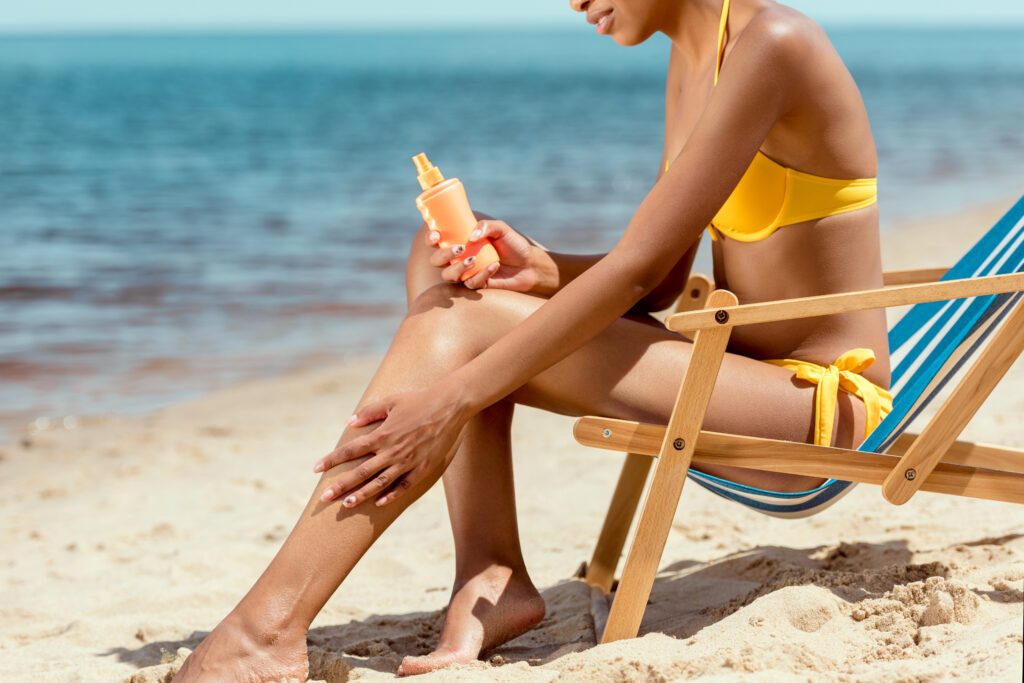
The fresh green of spring is symbolic of nature, growth, freshness, and fertility. Winter can have a drying effect on the skin, so spring offers a renewed opportunity to get your skin, spring-ready and back in top condition. From exfoliation to properly caring for your skin in the spring sun, here are a few tips that will lead to dew-kissed, glowing skin.
Exfoliation
Shedding winter layers also applies to the skin. Prepare your skin to look and feel its best by sloughing off the dead, clogged skin cells that have accumulated throughout the winter. Exfoliation aids in boosting the circulation of the skin. This circulation stimulates the skin and produces new skin cells, which gives the skin that radiant, beaming look.
A physical exfoliant is a body scrub or product that contains grainy particles, usually sugar or salt, providing the scrubbing feeling when used. A chemical exfoliator is the milder of the two and recommended for sensitive skin. Consult with your dermatologist to determine which is the best type for you and your skin. A dermatologist is uniquely qualified to craft a personalized skin care regimen that will yield the best possible results.
Exfoliation is one of the oldest beauty practices and has been embraced by many cultures with their own unique traditions. The Chinese would rub ground pearls across their skin to rid it of dead cells with hopes of developing an illuminating glow. A traditional Scandinavian method involved vigorously scrubbing naked bodies with cedar branches in the snow before finding refuge in hot saunas.
Although those traditional methods served their purpose at the time, less expensive (and less-rustic) practices are now the norm. Here are some things to keep in mind when exfoliating:
- Consider your skin type. Everyone’s skin is different; thus, everyone must consider the products and methods that will be safest and the most beneficial for their specific skin type. Those with sensitive skin may want to use a soft washcloth and mild chemical exfoliator; while those with oily, thicker skin, should consider a stronger, mechanical product.
- Review the products you already use. Certain products or medications in your daily routine may cause your skin to be more sensitive and prone to peeling. Research what you already use and consult with your dermatologist about any over-the-counter products you are using.
- Be gentle. Gently apply products to your skin using small, circular motions for about 30 seconds, before rinsing with lukewarm water. Avoid any open wounds, sunburns, bug bites or acne breakouts as it could lead to scaring.
- Moisturize: Exfoliation has a drying effect on the skin, so be sure to immediately apply a moisturizing product to keep the skin hydrated and nourished.
Hydration
It is imperative to stay hydrated for overall health reasons, but especially for your skin. After exfoliation, take extra steps to keep your skin hydrated so it will stay supple and smooth. Moisturize when you get out of the shower and before bed. Swap the heavier, moisturizing cream you’ve been using all winter for a lighter, hydrating product to create spring-ready skin.
Don’t forget to drink water. The more water you drink, the more your skin will love you and reward you with a youthful, brighter glow. As the temperatures rise, you’ll likely be sweating and spending more time in the sun. The amount of water you are supposed to drink in a day depends on your overall weight and daily physical activity, but a few extra cups a day will help as you adjust to the heat.
Sun Protection
Did we mention the sun? As the layers fall off with the warming weather, you’ll naturally want to expose more skin. It is imperative to wear sunscreen every day to best protect the skin. At the end of winter, your skin will be at its palest and most vulnerable state. This is when your skin will burn the easiest resulting in the most damage. Applying a product with at least an SPF of 30 will reintroduce your skin to the UV rays and absorb them at a healthy rate.
By making this part of your daily routine you’ll be thankful in the long run. Your spring-ready skin will age the healthiest it can, without sun damage or spots, and your risk for skin cancer will be drastically reduced.
Want to learn more about how you can get your skin ready for spring? The staff at Anne Arundel Dermatology have years of experience in recommending medical grade skin care products that deliver the best results. Visit us online or make an appointment today by giving us a call at (443) 351-3376.





